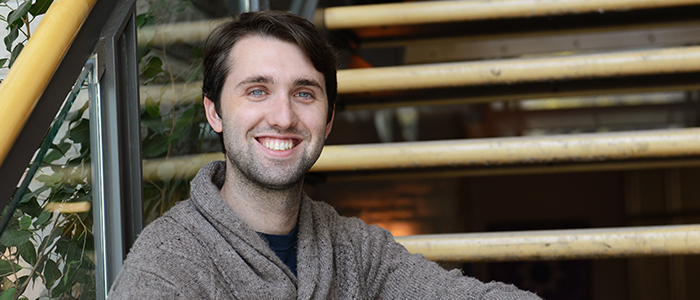Your research could change the world

I don’t know about all of you, but I do not see big leaps forward in the lab every day. Progress can be tough to measure sometimes, and it is easy to become discouraged. After all, we are students and trainees — we are learning, perhaps short on experience, and mistakes happen.
Having said that, that’s no excuse to think that the research you are working on right now is not important, and won’t have any real meaning.
One of the best examples of this is the discovery of insulin. Everyone involved in that research was young with an uncertain future, except for Professor John MacLeod. How were they different than we are today? How is their story different from what yours could be?
In 1921, shortly after World War I, a struggling 29-year-old surgeon named Frederick Banting was preparing for a lecture on carbohydrate metabolism at Western University. He came across a report describing how a case of pancreatic lithiasis had obstructed the main pancreatic duct resulting in death of most of the pancreas, leaving the islets of Langerhans unaffected. The author suggested that the health of these structures was important to the genesis of diabetes.
On October 31, Banting awoke at 2:00 a.m. in a little house on Adelaide Street and scribbled an idea on a pad of paper, which would become the basis of a series of experiments that would change the world forever. Banting proposed an experiment to F.R. Miller at Western, who felt the expertise and facilities at the University were not set to perform such experiments, and suggested he try speaking with J.J.R. Macleod in Toronto. Macleod immediately turned Banting down due to his inexperience. Banting persisted, however, and Macleod changed his mind, famously stating that the negative results might be useful.
Macleod provided Banting with lab space and two summer students. The experiment was simple — they would collect pancreatic extracts from one set of animals and see what would happen when those extracts were introduced to another set of animals, in which the pancreas had been removed.
The summer students, Clark Noble and Charles H. Best, were both 22. They had acquired basic lab skills by completing undergraduate degrees in physiology and biochemistry, and were going to start their master’s studies under Macleod’s supervision in the fall. The original plan was that each would work with Banting for only half of the summer. After a coin toss, Best took the first half of the summer — Noble never started, as Banting decided to keep Best for the whole duration of the summer.
No positive results appeared until July 30, when the blood glucose in one of their research animals was reduced by 40 percent in one hour. This outcome was great, but the following trials were inconsistent. Enter James Bertram Collip, a visiting professor from Alberta. Macleod assigned him to purify the extract to yield more consistent results and make it more potent. He, like Banting, was only 29.
In February 1922, Collip’s extract was injected into Leonard Thompson, a 14-year-old diabetic boy. Thompson’s blood sugar dropped and he was able to eat normal food for the first time in years.
In 1923, Banting and MacLeod were awarded the Nobel Prize in Physiology or Medicine for the discovery of insulin for the treatment of Diabetes mellitus, and split their prize money with Best and Collip. In only one year, the team had brought insulin to the world.
This is one of the greatest contributions to modern medicine. It was a risky study in which a 29-year-old with no research experience spent all of his money to take on a problem that so many had failed to solve, using an experiment that had already been tried. A 22-year-old undergraduate student, who was just about to start his master’s degree, was his expert for the summer, and a 29-year-old researcher helped bring everything together.
This would not have been possible if all the right people had not been there at the same time, working together toward a common goal. They did not only work, though — they were passionate about what they were doing. They put their whole selves into carrying out the studies, talked about it, ate and slept in the lab and argued over it. That passion for saving lives, knowing the unknown, and getting the job done is what lead to experiment after experiment even in the face of great adversity and failure.
We can learn a lot from them, as they were just like us.
Great discoveries don’t just happen. Like the insulin group, we should all take our research seriously. We should put in an extra hour here and there, read one more paper, do one more experiment, get into passionate debates with our colleagues, and ask for help from someone with expertise outside of our field. It might make a difference one day, and that day might be sooner than you think.
You may not win a Nobel Prize — most people don’t. But every time you look at an experimental result, remember you are the only person in the world who knows that you know. Every paper you publish is an entry into the encyclopedia of human knowledge that forms the tapestry of physiology and disease, and could be a link that will lead to better lives for millions of people.
It’s an exciting thought. Isn’t that alone worth being passionate about? Isn’t that why we’re here?
Alex Moszczynski
PhD Candidate, Department of Neuroscience
Chair, Graduate Students Council, Schulich Medicine & Dentistry








